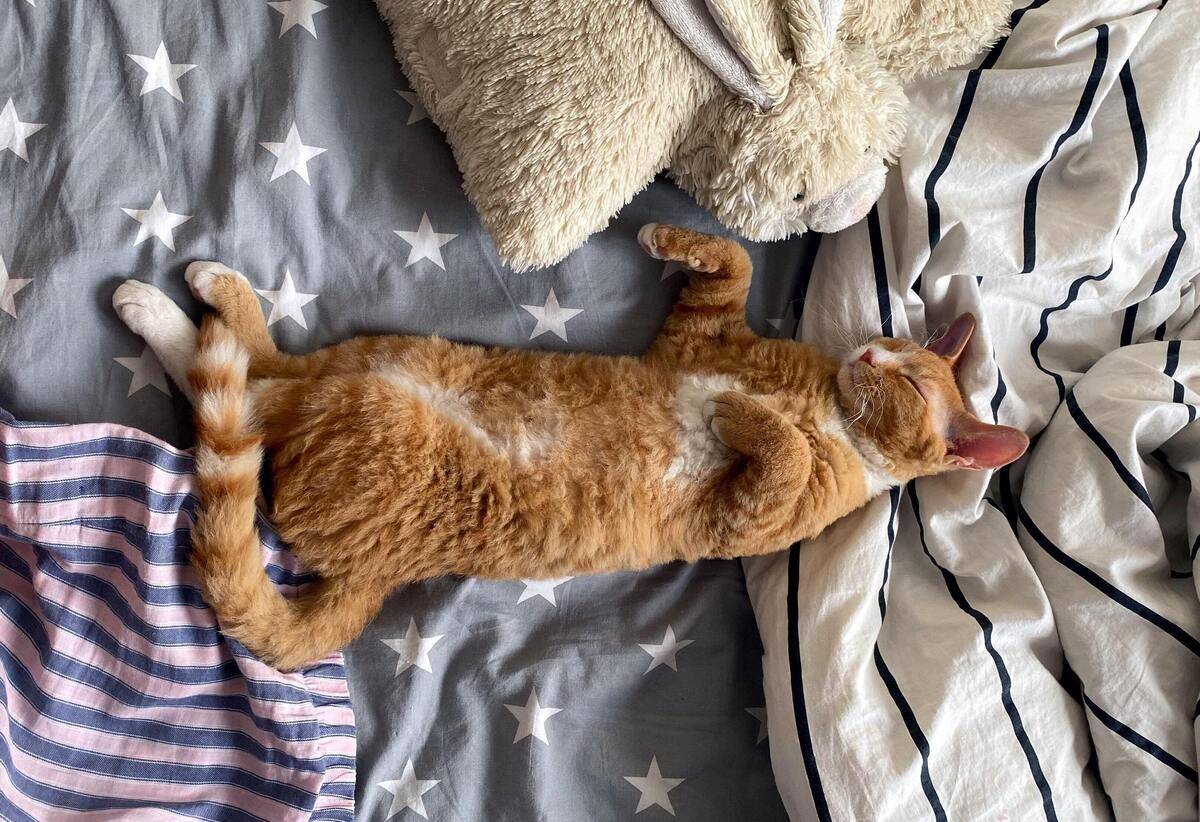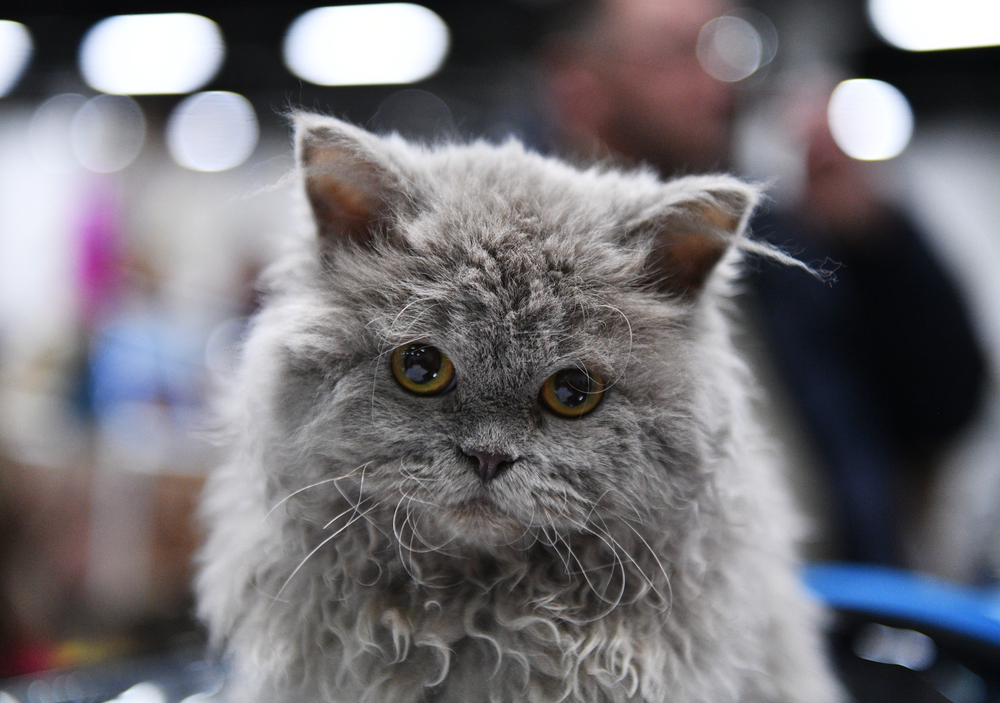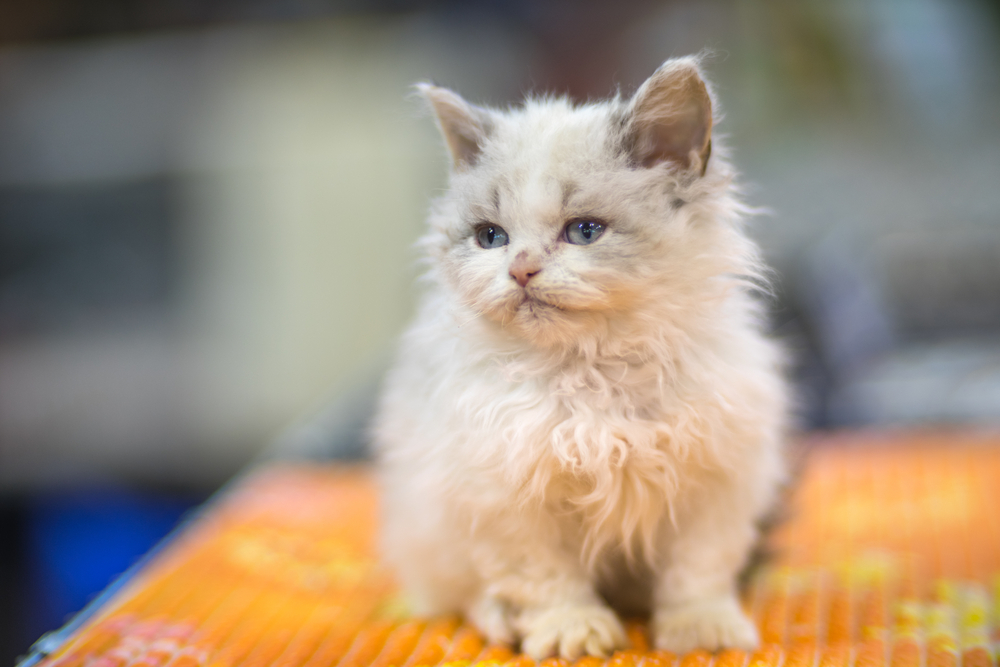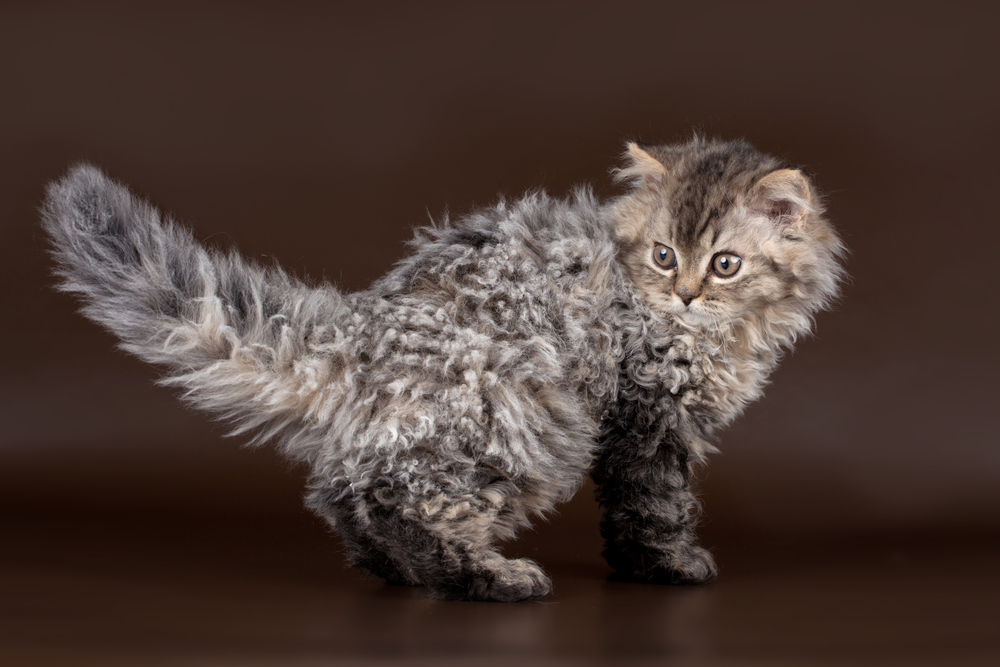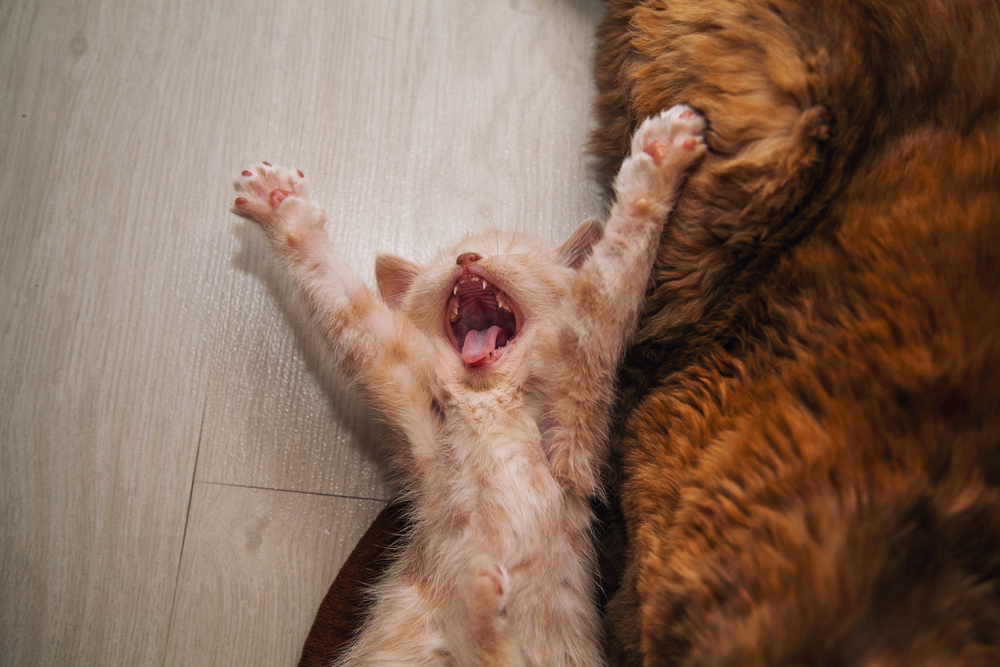📖 Table of Content:
Pet parents and purr enthusiasts aplenty can pinpoint a Siamese or Persian out of a lineup of cats. But we’d argue that most wouldn’t be able to do the same with a Sokoke or a Chartreux. Before you start throwing hands because of that dig, we want you to meet yet another rare breed, the Lambkin cat.
What on earth is a Lambkin?
If you’re on the hunt for the rarest of breeds with a scruffy, curly coat, dwarfish demeanor, and the shortest, stubbiest digits you’ve ever seen, you might want to take a peep at the Munchkin and Selkirk Rex mix known as Nanus Rex or Lambkin.
Lambkin cats are surrounded by controversy considering they’re a crossbreed with a myriad of health problems that, frankly, could’ve been avoided. Getting your Lambkin from a reputable breed can make a world of difference, but more on that down below.
What’s a Lambkin cat? What’s there to know about Lambkins before getting one? We’ve rounded up a few little-known facts about the Nanus Rex in the hopes that you end up falling in love with this affectionate, appreciative cat breed.
What is a Lambkin cat?
Lambkin cats are the cutest, cuddliest creatures with the most mysterious features that attract attention no matter what they’re doing. Lambkins, contrary to popular belief, weren’t created as a combination of a lamb and a cat (although their signature curly coats suggest otherwise).
We don’t know the exact dates of when the breeding process started, but it’s estimated that the Lambkin breed was created sometime between 1987 and 1991. This suggests that Lambkins are a brand-new breed.
Lambkins were created by Terri Harris, an American breeder who crossed a Munchkin cat with a Selkirk Rex hoping he’d end up with a scruffy dwarf kitten. And that’s exactly what happened.
With the Selkirk Rex’s curly coat genes and Munchkin’s genetic makeup for short, stubby legs, Lambkin kittens turned out to be the most adorable animals ever.
But with great power comes great responsibility. Before the breeder created the Lambkin breed, the world was well aware of the Munchkins’ health struggles that were a consequence of rash and reckless breeding.
Munchkin cats suffer from hypochondroplasia, a genetic form of dwarfism that prevents the limbs from growing while the rest of the body grows at a normal rate. Munchkin cats suffer from a host of severe health problems such as hyperthyroidism, osteoarthritis, uremia, and pectus excavatum, too.
Breeders who worked on creating the Lambkin breed knew that and decided to proceed with experiments. Because of that, Lambkin cats were never formally accepted by the Cat Fanciers’ Association (CFA) or the International Cat Association (TICA).
What’s the history behind the Lambkin cat?
Lambkin cats were, however, accepted by the Dwarf Cat Association (TDCA). With the Munchkin’s short stature, we aren’t surprised by the TDCA’s decision to accept the curious creatures. Lambkins’ parents, Munchkin and Selkirk Rex, determine what the kittens are going to look like.
We’ve mentioned that Munchkin cats are shrouded in controversy, but we’re bringing you all you need to know about both breeds to ensure you understand why Lambkin cats are the way they are.
Without further ado, meet Lambkin’s parents: Munchkin and Selkirk Rex.
About Munchkin cats
We’re pretty sure everybody’s heard of “the Dachshund of the cat kingdom.” With legs that are around 3 fingerbreadths shorter than the average feline and the rest of the body that’s the same as the average feline, these purr puffs are petite pets.
Whether you’re on the hunt for a cat that resembles a kitten or one that can pass for a “sausage cat,” Munchkin cats are the way to go. But, but, but – there’s always a but when talking about cats that come with unusual, unique features.
Munchkin’s short, stubby legs are a result of a spontaneous genetic mutation, which wouldn’t be that big of a problem. But when the rest of the world figured out that Munchkins can be specifically bred to produce cats with little legs, the breeders decided to throw ethics out of the window.
Because of the controversy, the Cat Fanciers Association (CFA) and the International Cat Association (TICA) don’t recognize the Munchkin as an official breed.
When you turn a blind eye to controversial matters, however, you’ll be surprised by the amount of affection and appreciation these beautiful babies offer. Munchkins adore humans and they’re almost always happy to cuddle, take a nap, or entertain them.
With a kittenish attitude, Munchkins are extroverts that appreciate running around the apartment, playing with toys, and exploring nature.
What about Selkirk Rex cats, though? What’s the other half of the Lambkin gene pool like?
About Selkirk Rex cats
Selkirk Rex cats are a sight for sore eyes. Where do we even start – the cute curly coat, adorable almond-shaped eyes, or addicting purrsonality?
Selkirk Rex cats are perfect for pet parents who’ve always wanted to get a teddy bear cat. Sure, Selkirk Rex cats are better known as “cats in sheep’s clothing,” but they’re huge, huggable cats with big heads and even bigger eyes. Curls are what these cuties are known for, but there’s more to them than meets the eye.
We wouldn’t be surprised to hear that the Selkirk Rex breed started at a farm, considering the woolen appearance, but that’s not the case.
A small furball by the name of Miss DePesto was born at an animal shelter in Montana in 1987. Adopted by Jeri Newman, Miss DePesto became the first Selkirk Rex cat and “the mother” of the breed. Actually, the first Selkirk Rex cat was different than the one we’re familiar with.
With time, breeders decided to add more and more breeds to create a Selkirk Rex cat with favorable features people would want to adopt.
Persian, Exotic Shorthair, and British Shorthair were some of the most common breeds added to the gene pool. Selkirk Rex went on to become a fun, friendly, and curious cat that adores hanging out with big families.
So, with the parents covered, what’s there to know about their offspring, the Lambkin cat?
What to know about the Lambkin cat before you get one
1. What are Lambkin cats like?
With Munchkin and Selkirk Rex parentage, we’re not surprised that Lambkins are the cutest, cuddliest cats ever. Whether they’re running around the apartment, napping on your chest, or following you from one room to the other, there’s never a dull moment with them.
Lambkin cats are extremely extroverted, which might be something you want to keep an eye on. Lambkins aren’t strangers to sneaking out of the apartment, hanging out with neighbors, and waving at random passersby. What’s not to adore?
2. What do Lambkin cats need to have a happy life?
Lambkin cats aren’t high-maintenance whatsoever. Whether they’re presented with a one-bedroom apartment or a mansion with a huge backyard, they’ll be equally happy. We’d argue that Lambkin cats need attention and affection, for the most part, and everything else comes as a plus.
Provide them with plenty of toys to play with, a snug bed to take naps in, and a cat tree with a scratching post and you’ll be the best pet parent ever.
3. What about grooming needs?
We do need to remember the matted, woolen coats that Lambkins got from Selkirk Rex cats. Lambkins require regular grooming to ensure they’re happy and healthy.
Bathe them whenever you notice they’re muddy, but brush them two or even three times a week. Brushing makes them much more comfortable and that’s why they’re tolerant of the big brush – the more you brush them, the frizzier they’re going to get.
4. Are Lambkins’ small legs a big problem?
Yes! You’d be surprised at the number of serious conditions Lambkins are susceptible to because of the little legs that are a result of a genetic mutation.
You might notice your Lambkin can’t move the same way average cats move – she can’t climb on the kitchen counters, hop on high surfaces, or sometimes even land on her feet. Lambkins are susceptible to osteoarthritis, hyperthyroidism, uremia, spinal problems, and joint disease.
5. What do these scruffy friends eat?
Lambkins are cats and cats are carnivores – there’s your answer. Lambkins thrive on meat – in other words, animal protein and animal-based nutrients. With high-quality cat food, you don’t have to worry about whether your Lambkin’s getting the nutrients she needs, but you can reward her with a bite or two of plain chicken, too.
6. Are Lambkin cats healthy?
With everything we mentioned about Lambkin’s health problems, we do need to underline that these curly cuties are a generally healthy breed with an expected lifespan of 12 to 14 years.
Heart problems, urinary tract infections, and pancreatitis affect the average cat, too. So, other than that, there’s no reason your Lambkin can’t have a happy and healthy life.
